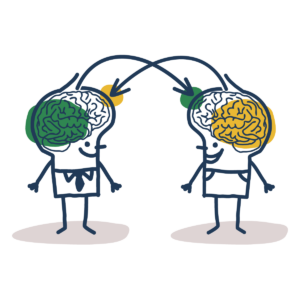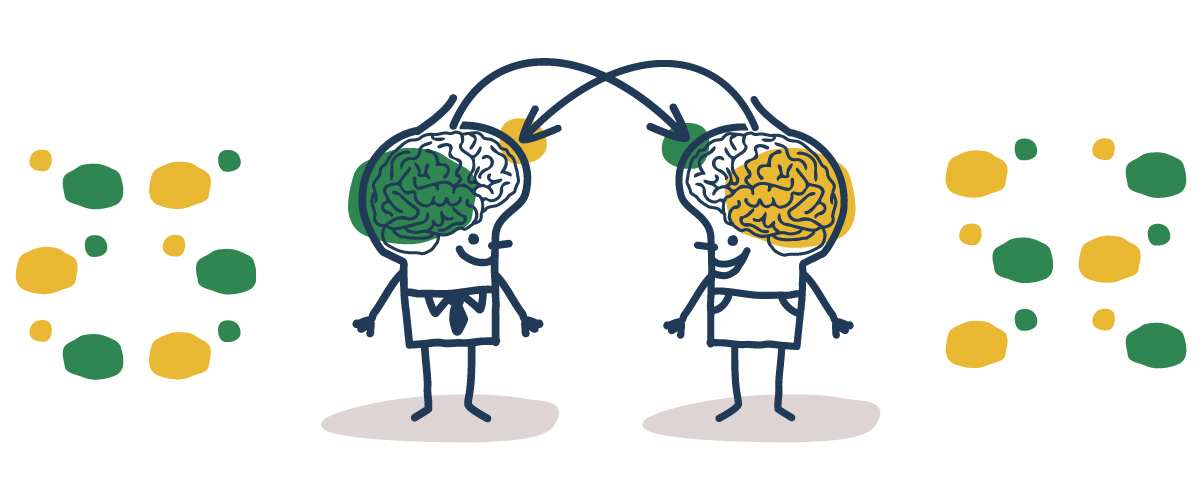Reciprocal teaching is a powerful, student-centered strategy that promotes reading comprehension, collaboration, and metacognitive thinking. This structured approach teaches students to actively engage with a text, develop independence, and take ownership of their learning. In this blog, we will explore the four core Reciprocal Reading strategies — Predicting, Questioning, Clarifying, and Summarizing — and provide “think aloud” examples to demonstrate how teachers can model these strategies explicitly.
1. Predict-Infer: Setting a Purpose for Reading
Explanation: Predicting encourages students to engage with the text before reading by making educated guesses about what will happen next or what the text will be about. Predictions activate prior knowledge, set a purpose for reading, and build curiosity.
Think-Aloud Model for Predicting:
“Before we start reading this chapter, let’s take a moment to make some predictions. I notice the title says ‘The Storm.’ I also see a picture of a ship being tossed in huge waves. Hmm…this makes me think the characters might get caught in a dangerous storm at sea. I’ve read other stories where storms often bring unexpected challenges, so I predict something will happen that forces the characters to change their plans. Let’s read on to see if my prediction is accurate.”
Teacher Move: The teacher pauses periodically while reading to adjust or refine predictions, modeling that predictions can change as new information emerges.
2. Questioning: Promoting Critical Thinking
Explanation: Questioning teaches students to engage with the text by asking questions that spark curiosity or deepen understanding. This strategy encourages both literal and inferential thinking, making students active participants in their learning.
Think-Aloud Model for Questioning:
“I just read that the main character, Alex, decided to leave home without telling anyone. That makes me wonder why Alex would do that. Was there something going on at home that made him feel like he couldn’t stay? I also wonder what consequences he might face because of this decision. These questions make me curious to keep reading and look for clues that help answer them.”
Teacher Move: Encourage students to generate different types of questions — “right there” questions, “think and search” questions, and “author and me” questions — to promote both surface and deeper comprehension.
3. Clarifying: Tackling Confusing Texts
Explanation: Clarifying helps students monitor their comprehension as they read. When they encounter confusing vocabulary or concepts, they learn to pause, ask for help, re-read, or use context clues to make sense of the text.
Think-Aloud Model for Clarifying:
“Wait a minute…I just came across the word ‘maritime’ in this sentence: ‘The maritime industry was essential to the coastal town’s economy.’ I’m not sure what that word means. Let’s think it through. I know the word ‘marine’ is related to the ocean, so ‘maritime’ probably has something to do with the sea. Ah, the sentence says it’s connected to the town’s economy, so it must mean industries like fishing or shipping. I’ll write this word down to look it up later, just to be sure.”
Teacher Move: Model persistence by re-reading or using a dictionary when students encounter difficult words or concepts, demonstrating that confusion is a natural part of learning.
4. Summarizing: Synthesizing Information
Explanation: Summarizing requires students to distill the essential ideas of a text in their own words, which builds comprehension and retention. It helps them distinguish between important details and irrelevant information.
Think-Aloud Model for Summarizing:
“Okay, we just finished reading about how Alex survived the storm and found help in a nearby village. To summarize, the key events are: Alex set out on his journey, got caught in a storm, and washed ashore near a village where someone rescued him. The most important idea is that, even though things didn’t go as planned, Alex found help in the end. I’ll leave out small details, like what Alex was wearing, because they don’t affect the main point.”
Teacher Move: Use graphic organizers, such as a “Somebody-Wanted-But-So-Then” chart, to help students focus on the essential elements when summarizing.
Bringing It All Together: A Reciprocal Reading Routine
Reciprocal Reading works best when these strategies are introduced, practiced, and integrated into a structured routine. Here’s an example of how a teacher might introduce these strategies in a classroom setting:
- Before Reading: The teacher models Predicting by examining the title and illustrations.
- During Reading: The class stops at key points to Question and Clarify, with the teacher modeling aloud how they might navigate confusion.
- After Reading: The teacher leads students through Summarizing, asking them to synthesize the key events and ideas.
Tips for Implementation: Ensuring Student Success
- Model Each Strategy Explicitly: Teachers should “think aloud” frequently to show how they apply each strategy in real-time. This demystifies the process for students and encourages them to adopt these habits
- Use Reciprocal Teaching Groups: Once students are familiar with the strategies, they can take turns leading the group in Predicting, Questioning, Clarifying, and Summarizing.
- Incorporate Scaffolding: Provide sentence starters or graphic organizers to support students as they learn to use these strategies independently.
- Monitor Progress and Provide Feedback: Observe student discussions to ensure they are applying the strategies effectively, and offer feedback to deepen their practice.
Fostering Independent and Reflective Readers
Reciprocal Reading isn’t just about comprehension; it builds confidence, collaboration, and metacognitive skills. By explicitly modeling each strategy, teachers empower students to become reflective readers who can monitor their own understanding, ask thoughtful questions, and synthesize information effectively. Over time, students internalize these strategies, transforming into independent learners who actively engage with texts across disciplines.
As you introduce these strategies, remember: modeling is the key. Each “think aloud” moment brings clarity and purpose to students, showing them that reading is not just about words on a page but about thinking, reflecting, and growing as learners.
Call to Action:
Start using Reciprocal Reading strategies in your classroom today! Model each strategy explicitly and watch as your students become more confident, curious, and capable readers. What will your next reading session look like when students are empowered to lead?
The Research
Palincsar and Brown (1984) introduced reciprocal teaching as an instructional method designed to improve reading comprehension by engaging students with four core strategies: predicting, questioning, clarifying, and summarizing. Their research demonstrated that when students practice these strategies in small groups, their ability to comprehend texts improves significantly, particularly with the guidance of teachers early on in the process.
A review of 19 experimental studies conducted by Rosenshine and Meister (1993) found that reciprocal teaching is most effective when students receive explicit instruction in the strategies before beginning independent work. The review noted that the method works well with both general education students and those in special education but emphasizes that gains are more pronounced with experimenter-developed assessments compared to standardized tests.
Recent studies also highlight the applicability of reciprocal teaching for English Language Learners (ELLs). Research shows that integrating these strategies in content areas, such as social studies, improves students’ comprehension, even when their English proficiency varies. This is particularly relevant in diverse classrooms, where reciprocal teaching helps foster both collaboration and deeper understanding (Casey, 2018).



